18 September 2024
![]() 6 mins Read
6 mins Read
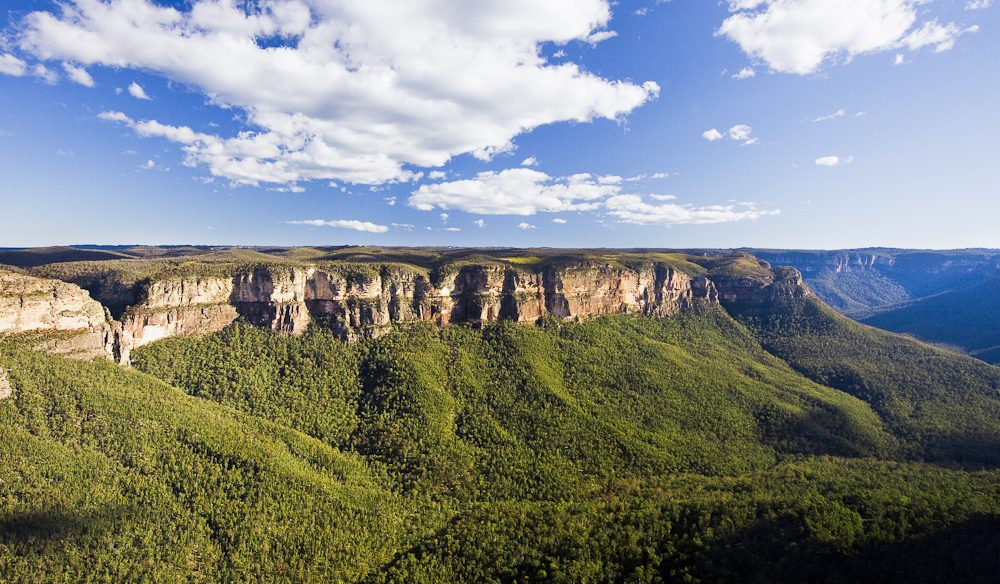
From alpine peaks to red desert and rainforest, the walks and hikes here are a testament to the diversity of landscape in Australia. If you even manage to do half of what’s on this top 10, you can say that you’ve seen some of the most remote, spectacular and wild places on the planet, and some of this country’s pristine World Heritage areas.
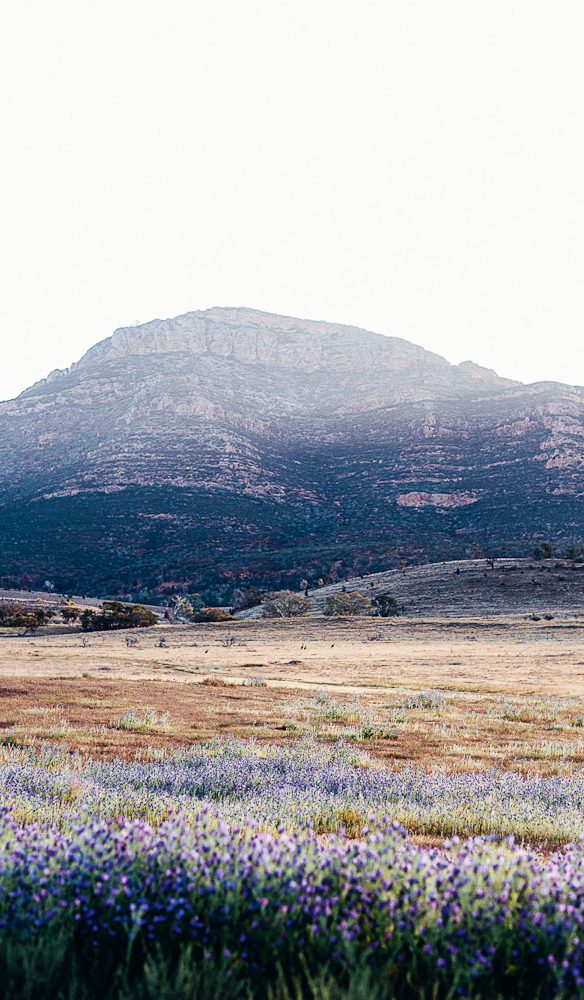
Bridle Gap hike dissects the magnificent Wilpena Pound (photo: Elise Hassey).
While there are many walks you can do in and around the geological wonder that is Wilpena Pound, this one takes you right across its floor from the top of one side to the other. Part of the famous 1200-kilometre Heysen Trail, it’s a six-hour return hike across 19 kilometres. The floor of the Pound is a bird-lover’s dream with a variety of raptors and parrots, wrens and robins making their home among the native pines, eucalyptus and heath.
Walk highlight: The view of the mountain-ringed natural amphitheatre from Bridal Gap.
Distance: 18.6km return
Level: Grade 3 (moderate)
The Blue Mountains National Park is an arresting wonderland of verdant forest surrounded by giant sandstone buttresses. A six-kilometre loop that leaves from near the quaint village of Blackheath at Evans Lookout, the Grand Canyon Track affords mind-blowing views of Grose Valley. The trail takes you along the clifftops of the Blue Mountains dropping down into sub-tropical forest, beautiful Beauchamp Falls and fern-filled prehistoric gullies. The Grand Canyon itself is a 180-metre deep cut through the sandstone and makes for a dramatic ascent out of it to complete this short four-hour, yet epic, journey.
Walk highlight: Regular breaks in the bush along the top of the valley offer views of lush, forest-filled Grose Valley making it easy to see why this is a World Heritage Area.
Distance: 6.3km loop
Level: Grade 3 (moderate)
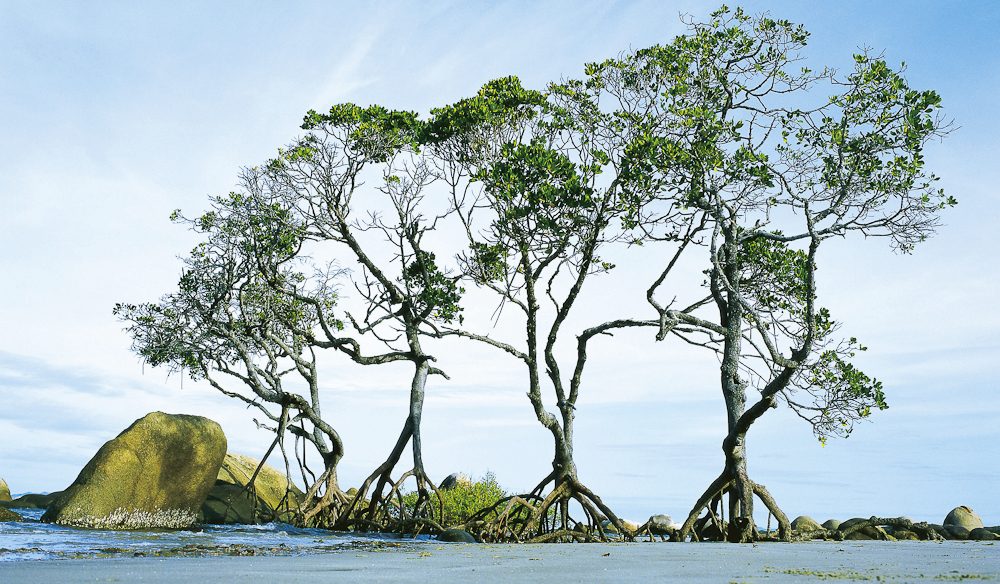
Strolling the beach at Lockhart River on K’gari’s Great Walk.
The world’s largest sand island should be something of a pilgrimage for Australians. K’gari is a paradise of white beaches and over 100 freshwater lakes including the spectacular Lake McKenzie, mangroves and rainforest-lined creeks, all of which have given it World Heritage status. The six- to eight-day, 90-kilometre Great Walk takes in the best of the island, from the towering forest known as the Valley of the Giants to the famous swimming hole that is Lake Wabby.
Walk highlight: Keep an eye out for dingoes, one of the best places to spot this iconic animal.
Distance: 75km
Level: Grade 4 (moderate)
This route is fast becoming the must-do walk in the country, taking you into the remote desert from Alice Springs to Mt Sonder. You’ll stride out across vast flood plains, along the dramatic ridges of the West MacDonnell Ranges and through spectacular canyons. Walk the whole 223 kilometres of the Larapinta, which takes 15 to 16 days, or simply do a day section, like the Mount Sonder Return or Counts Point Return. Along the way, you’ll admire rare desert flora and spot black-footed rock wallabies.
Walk highlight: Simpsons Gap is a dramatic red-rock passage sheltering a welcome waterhole.
Distance: 75km
Level: Grade 5 (difficult)
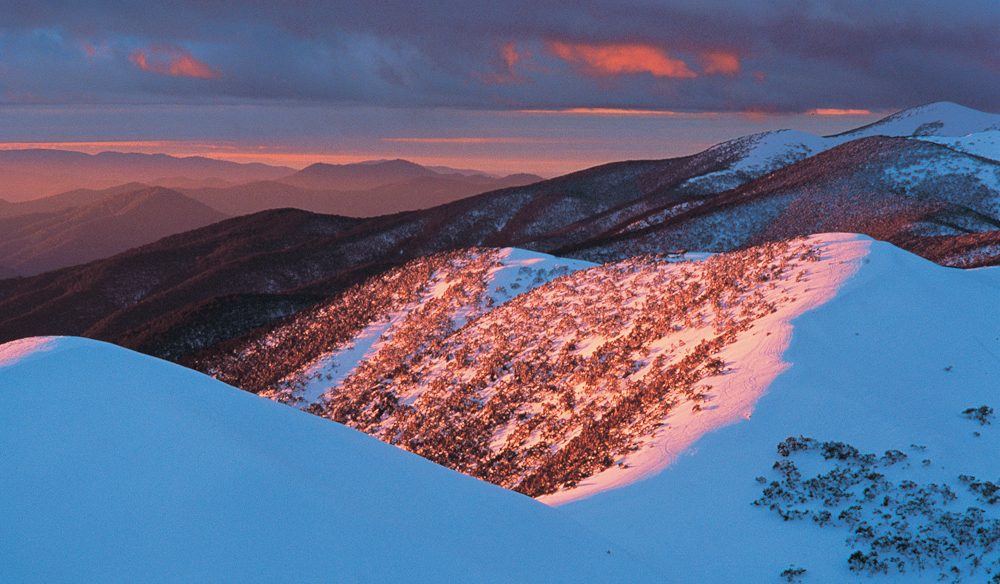
Mt Bogong showing what the Alpine National Park has to offer.
To witness perhaps Australia’s most unlikely landscape, that of its alpine wilderness, you have to get up into the mountains. Now you can walk the entire length of the 650-kilometre Australian Alps Walking Track to achieve this, or you can cheat and do a fairly arduous one-day walk that takes you up into the high plains and the summit of Mt Bogong (‘Big-fella’, in Aboriginal tongue), Victoria’s highest at 1986 metres. The trail starts at the Mountain Creek picnic area and follows a steep 16-kilometre route known as Staircase Spur. You’ll pass through beautiful peppermint and snow gums before reaching the top of Mt Bogong and some awesome views of the Alpine National Park.
Walk highlight: Since this is a steep climb, you’ll be thankful for the sight of the charming Bivouac Hut, great for a spot of lunch.
Distance: 21.5km
Level: Grade 4 (moderate)
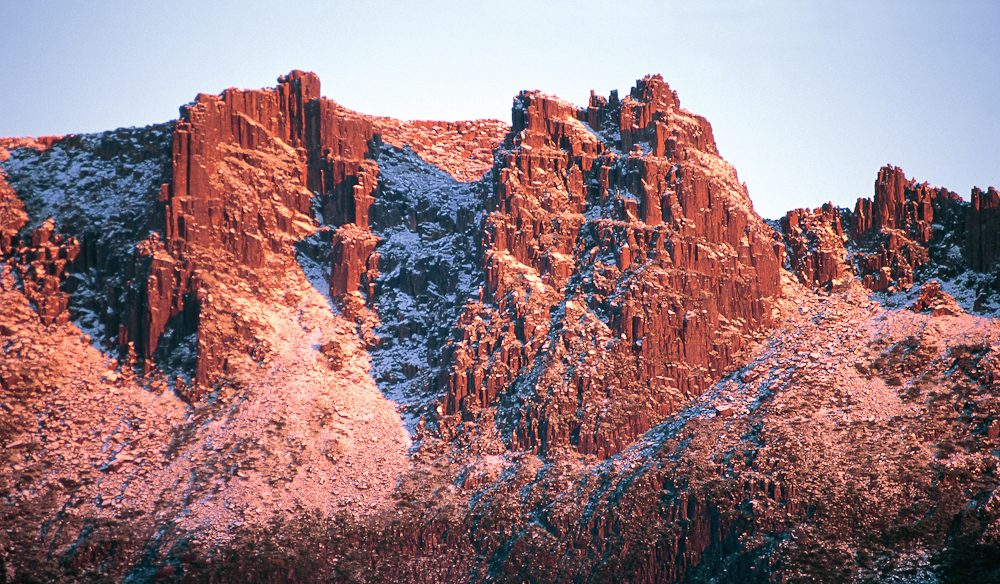
There’s no better way to see the wilderness of Cradle Mountain than by walking the Overland Track.
Tasmania’s wilderness is a World Heritage Area, and there’s no better way to see it than on this 65-kilometre, six-day walk. A once-in-a-lifetime trek, in the walking season from October to May you make your way from the base of Cradle Mountain to Lake St Clair passing through ancient rainforests, glacial valleys, meadows and a dramatic skyline of peaks. This walk is popular; you’ll need to book in advance to walk in the summer months (advisable!) staying at campsites and huts along the route.
Walk highlight: The Overland is ripe with side trips; take your time, go off the beaten track and make an ascent of Mt Ossa, Tasmania’s tallest at 1617 metres.
Distance: 65km
Level: Grade 4 (moderate)
If you’ve ever wanted to experience the beauty of this iconic region in all its glory, the Cape to Cape Walk is the way to do it. This diverse walk takes you through undulating forests and along the picturesque coastline that features some of Australia’s most pristine beaches. Taking approximately five to seven days to complete, you’ll traverse the full length of Leeuwin-Naturaliste National Park following the coast from the Cape Naturaliste Lighthouse to the Cape Leeuwin Lighthouse.
Walk highlight: The afternoon sunlight that streams through the towering Karri trees in Boranup Forest is something to behold.
Distance: 123km
Level: Grade 4 (moderate)
The rugged coastline of the Twelve Apostles Signature Walk promises hikers untamed beaches, shipwrecks, and an abundance of native flora and fauna. of four-day walk.Pack a tent and choose to sleep under the stars, or give yourself a bit of luxury and stay at the many hotels along the way.
shipwrecks
Walk highlight: Unsurprisingly, the reward at the end is that you’ll get to marvel at the limestone monuments that are the Twelve Apostles.
Distance: 44km
Level: Grade 4 (moderate)
LEAVE YOUR COMMENT